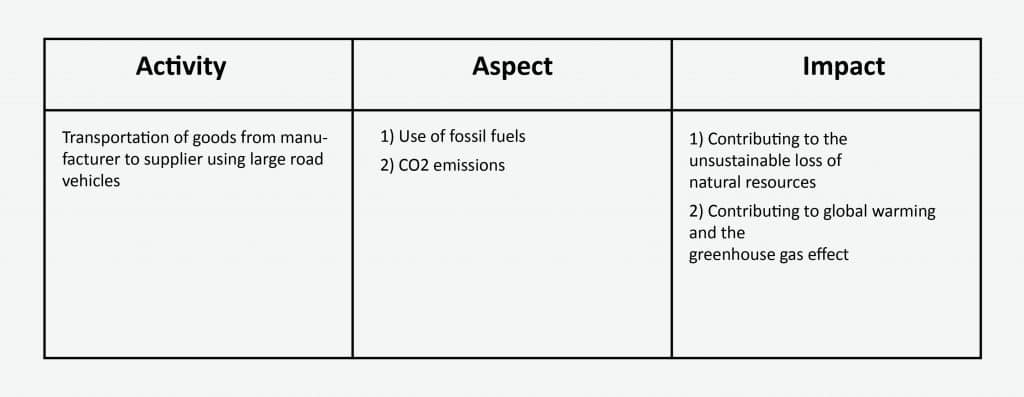
What is the environmental aspects and impacts register?
March 9th, 2020 By MarketingIf you’re looking to get ISO 14001 certified you might have stumbled across the term ‘environmental aspects and impacts register’. This term relates to an essential document that identifies and gives significance to the environmental impact of your organisation’s activities.
It might sound complicated, but it is actually very straightforward.
What is an environmental aspect?
An environmental aspect refers to the elements of an organisation’s processes or output that has the potential to have impact on the environment.
For example this could be:
- Air emissions
- Use of fossil fuels
- Land contamination
What is an environmental impact?
An environmental impact refers to the impact the aspect has on the environment.
Using the above example this could be:
- Air emissions: emissions of CO2 contribute to climate change
- Use of fossil fuels: unsustainable loss of natural resources
- Land contamination: contaminated land can lead to the destruction of wildlife in the surrounding areas
How do you create an environmental aspects and impacts register?
To develop your aspects and impacts register you first need to list all activities included in the scope of your environmental management system.
Don’t forget that as well as the regular, day-to-day activities involved in the running of your organisation, you should also consider any activities that are involved in emergency or startup/shut down conditions.
Once you have this list of activities, you can use a three-step process to begin developing your register:
- Select the activity/process
- Identify all the environmental aspects associated with the activity/process
- Identify the environmental impacts
So, you end up with something like this:

Significance score
The next step is to evaluate the significance of the activities you’ve listed, or in other words, their significance score. You can work this out by evaluating the likelihood of the impact occurring and the severity of its impact.
You can calculate it using the following method:
For each activity rank the likelihood of the impact occurring from 1 – 5 (1 being not very likely, 5 being very likely). Do the same for the severity (1 being the impact is not very severe, 5 being very severe). Then use the following formula to work out the significance score:
Severity score x Likelihood score = Significance score
You can then add this score as another column to your register.
Controls
Outline what you are doing to help mitigate the aspect. Using the above example of the transportation of goods, your control could be to switch to electric or hybrid vehicles. This forms the final column on your register.
Make sure you keep your environmental aspects and impacts register up to date. The introduction of any new activities or changes to suppliers, for example, need to be included in the register.
A well-maintained register will help you manage environmental risks and help contribute to a well-functioning environmental management system.
If you think you could benefit with a helping hand during the implementation of ISO 14001, schedule a free consultation from one of our consultations and see how we can help.

Contact Us
For a free quotation or remote presentation by an ISO specialist, contact us today.
IMSM Ltd
(Head Office)
20 Grosvenor Place
London
SW1X 7HN